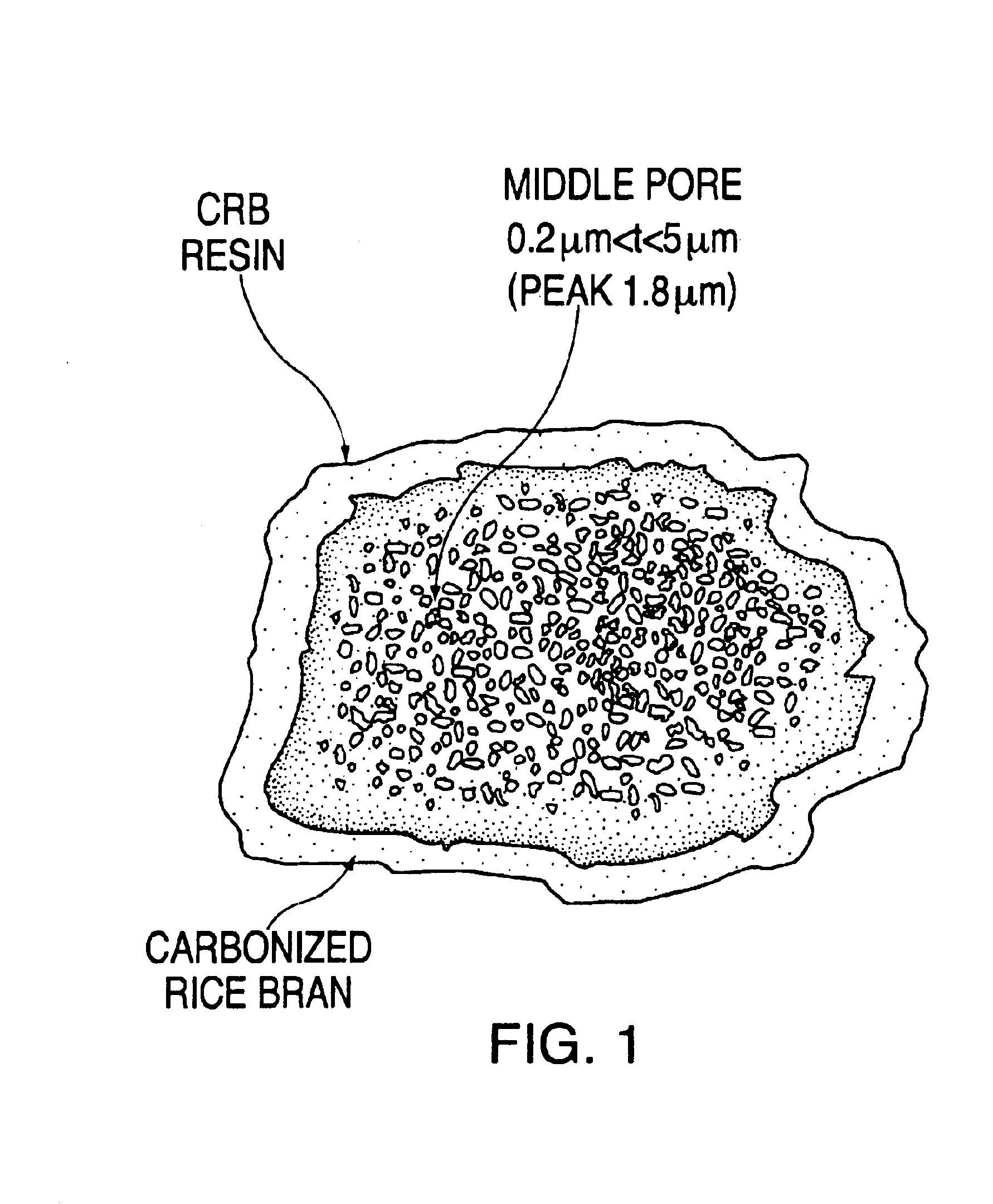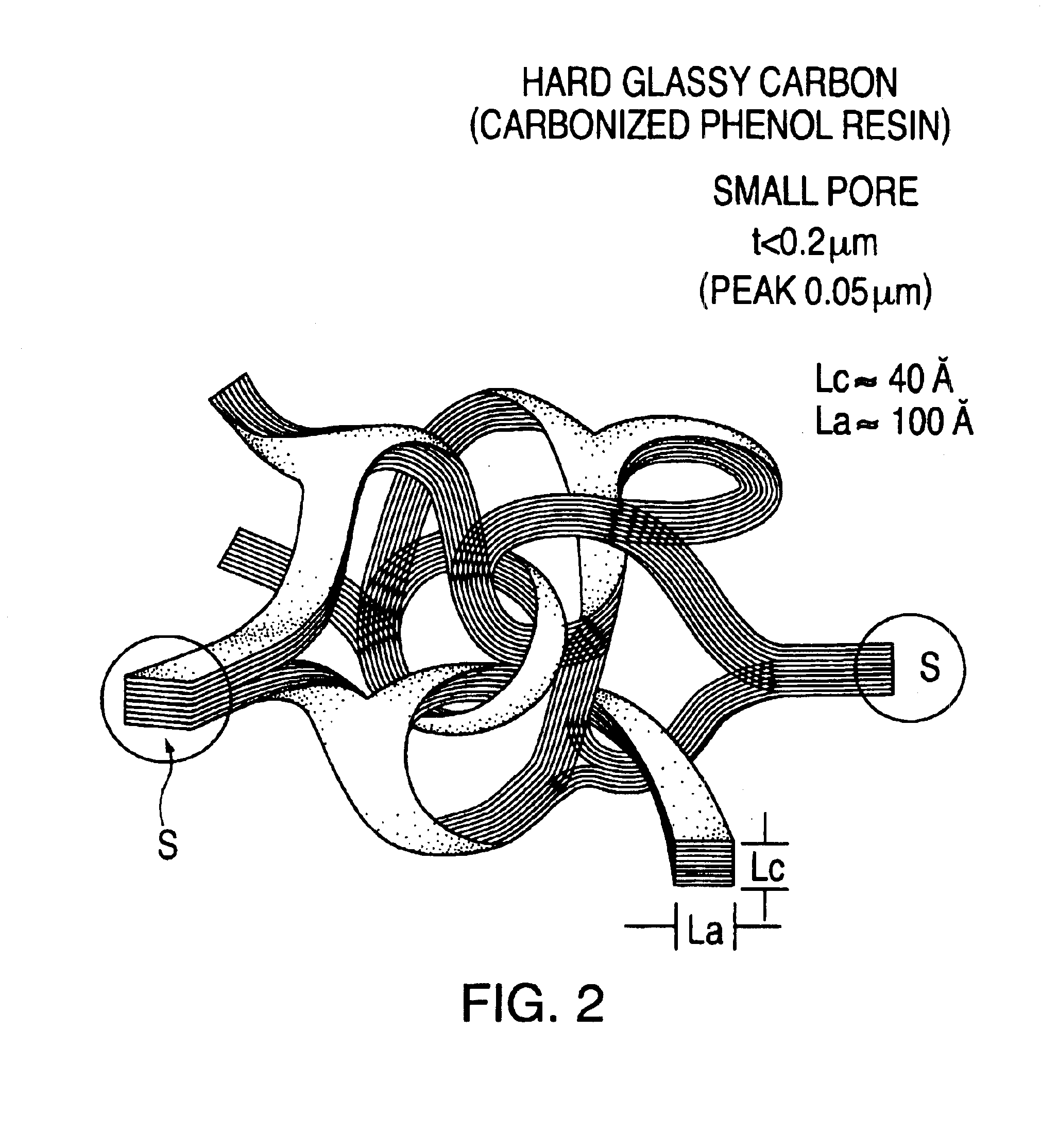Superfinishing grindstone
a grinding stone and superfinishing technology, applied in the field of grinding stones, can solve the problems of scratching the surface, reducing the cutting resistance, increasing the cutting ability of diamond and cbn, etc., and achieve the effect of easy removal from the finished structur
- Summary
- Abstract
- Description
- Claims
- Application Information
AI Technical Summary
Benefits of technology
Problems solved by technology
Method used
Image
Examples
first embodiment
[0055]In accordance with a first embodiment, in order to manufacture the CRB ceramic, 75 Kg of defatted rice bran obtained from rice bran is kneaded together with 25 Kg of liquid phenolic resin (resol) and heated to 50° C.-60° C. A homogeneous mixture is thus obtained.
[0056]The mixture is heated in a rotary kiln in a nitrogen atmosphere for 120 minutes at 700° C., thus performing the first baking. The obtained carbonized material is crushed into powder in a crushing mill and is then put through a ball mill to produce RB ceramic abrasive grains as a fine powder of 1-5 μm in average grain size.
[0057]In accordance with a second embodiment of the present invention, RB ceramic is prepared as in the first embodiment but the mixture is baked at 900° C. to obtain abrasive grains with an average grain size of 1-10 μm.
third embodiment
[0058]In accordance with a third embodiment and in order to manufacture the CRB ceramic, 75 Kg of defatted rice bran obtained from rice bran is kneaded together with 25 Kg of liquid phenolic resin (resol) and heated to 50° C.-60° C. A homogeneous mixture is thus obtained.
[0059]The mixture is heated in a rotary kiln in a nitrogen atmosphere for 100 minutes at 750° C., thus performing the first baking. The obtained carbonized material is crushed into powder in a crushing mill to produce a carbonized powder with an average grain size of 5-10 μm.
[0060]The resulting 75 kg of carbonized powder is kneaded together with 25 kg of solid phenolic resin (resol), while being heated to 100° C.-150° C. A homogenous material precursor to CRB ceramic is thus obtained.
[0061]This CRB ceramic precursor is pressure-formed at 20 MPa to produce a ball shape preferably sized at 3 cm. It receives a secondary baking at 700° C. in an electric furnace under a nitrogen atmosphere for a 3-hour period. The obtain...
fourth embodiment
[0062]In accordance with a fourth embodiment, CRB ceramic is prepared as in the second alternative embodiment but the first baking is performed at 750° C. and the second baking is performed at 700° C. to obtain abrasive grains with an average grain size of 1-5 μm.
PUM
| Property | Measurement | Unit |
|---|---|---|
| Grain size | aaaaa | aaaaa |
| Grain size | aaaaa | aaaaa |
| Temperature | aaaaa | aaaaa |
Abstract
Description
Claims
Application Information
 Login to View More
Login to View More - R&D
- Intellectual Property
- Life Sciences
- Materials
- Tech Scout
- Unparalleled Data Quality
- Higher Quality Content
- 60% Fewer Hallucinations
Browse by: Latest US Patents, China's latest patents, Technical Efficacy Thesaurus, Application Domain, Technology Topic, Popular Technical Reports.
© 2025 PatSnap. All rights reserved.Legal|Privacy policy|Modern Slavery Act Transparency Statement|Sitemap|About US| Contact US: help@patsnap.com


